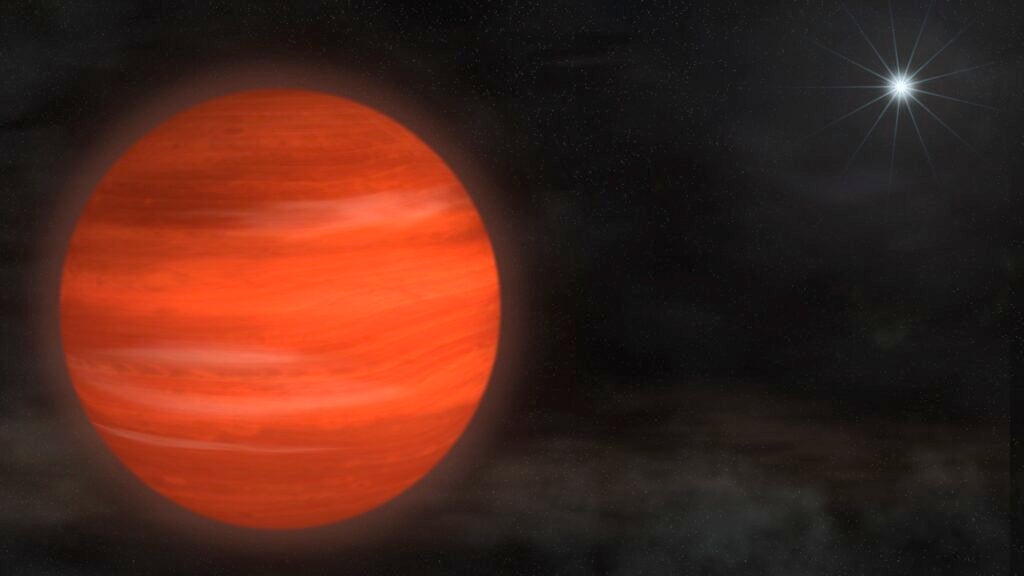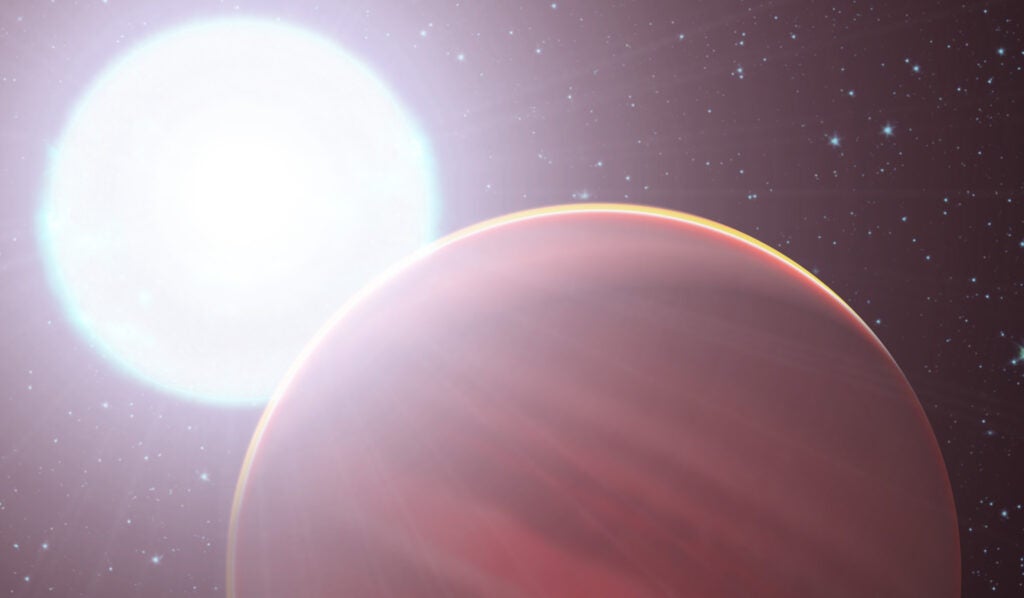Since 1992, astronomers have discovered nearly 5,000 exoplanets and estimate that our galaxy alone has billions and billions (and billions) more. Given those stats, it’s nice to imagine that light-years away, another orb like Earth might exist, awaiting discovery by enterprising humans. It could house continents to step foot on, a reasonable atmosphere to breathe, water to guzzle, resources to extract, and food to be foraged. Blessed as our exploratory spirit will one day surely be with warp drive.
This hypothetical planet has a name: Planet B. As in, Plan B. The proverbial Planet B functions as a sort of escape hatch, real or philosophical, for when things get hairy here on Planet A. This terrestrial cousin has long shown up in science fiction, shaping how Earthlings conceive of such a place, sometimes subconsciously. “We don’t even think about the fact that something like Star Wars takes place on exoplanets,” says Lisa Messeri, a Yale anthropologist and author of the book Placing Outer Space. A New Hope, after all, preceded the discovery of any actual exoplanets by 15 years.
There’s a big gap, however, between the scant worldmaking of the scientist, and the vivid imagination of the public. Real planets’ details remain fuzzy, with telescopes only able to determine their size, mass, distance from a star, rough temperature, and—in certain conditions—some molecules floating in their atmospheres. Scientists aren’t sure how many Planet B candidates there might be, or if any of those are truly Earth-like at all.
The James Webb Space Telescope, launching December 24, will help stitch that gap (a little), its big mirror and instruments bringing sharper focus to far-off places. But in the public imagination, planets may always have more personality and promise than we can scientifically discern, in part because of science fiction’s long history of developing their characters.
Planets have long appeared as the endpoints of “extraordinary voyages.” As early as the 16th century, “we were ‘discovering’ what was called the New World, and all of this flora and fauna, and descriptions and all of this cool stuff was being brought back to Europe,” says Ana Klimchynskaya, a scholar of science fiction at the University of Chicago. By the 18th century, writers had begun extrapolating that novelty beyond the atmosphere, to different planets where Earth-people could live. In the politically and socially experimental thought around the Age of Enlightenment, they imagined ways humans’ lives might be different: Other worlds became vessels for political satire and blue-sky what-ifs. “What other ways can we build a society?” Klimchynskaya says. “What might a utopia look like?”
That form of writing was a type of proto-science-fiction. True sci-fi, as we think of it today, only started in the 19th century, as science itself became popular with the public, countries grew industrialized, evolution became a widely accepted thing, and we learned Planet Earth was pretty old and used to have dinosaurs. Scientifically rigorous speculation seeped into literature. It produced, says Klimchynskaya, “this new storytelling form that was based on a new sense of humanity’s power over the world.” And other worlds.
In the early to mid 20th century and to this day, many fictional planets are only sort of Earth-like, though. They’re what science fiction scholar Katherine Buse of the University of Chicago calls “nonecological:” encompassing only an aspect or two of a real world. A globe made only of rubber, a desert planet, or one populated only by women. Writers didn’t gin up these characteristics for a physical, technical reason. The planets, like those at the end of extraordinary voyages, existed to house speculation.

A shift in literary possibilities occurred, says Buse, when author Harry Clement Stubbs, whose nom de plume was Hal Clement, published Mission of Gravity in 1954. In this serialized novel, he imagines a planet where gravity is up to 700 times stronger than Earth’s. It’s cold, fast-spinning, full of liquid methane. Aliens adapted to those conditions. The plot revolves around characters’ attempts to understand weather, geology, the atmosphere, and gravity. Rational investigations get them out of proverbial hot water. “The answer is always some kind of bringing together different scientific disciplines,” says Buse.
Stubb’s work also demonstrated how to bake a from-scratch planet and have readers experience it as a whole world. His work, and fiction that followed, gave humans the sense that ours is not the only globe out there, and that others could be survivable, even if not totally Earthy, with the tools of science.
Visual science fiction, though, has arguably had a stronger influence on how the average person thinks of what “an Earth-like exoplanet” might mean. Worlds in, say, Star Trek infuse us with ideas about exoplanets’ appearances, the visuals seeping subconsciously into societal conceptions.
But the resulting visions are pretty arbitrary. Treky worlds, for instance, tend to look like the area around Los Angeles, but not because exoplanets likely resemble our tech hub. “They had no budget, so they just went outside,” says Klimchynskaya. Stargate, meanwhile, was filmed in British Columbia, so all the planets look Vancouverish.
The number of North American-style orbs in the public imagination is also misleading. “People watch Star Trek, and they’re like, ‘The galaxy must be littered with habitable planets,’” says Kaitlin Rasmussen, a University of Michigan astronomer who researches exoplanets.
That litter feels particularly shiny now, as Earth confronts existential issues, from climate change to nuclear weapons. “It’s especially appealing to face that there’s another world that people haven’t completely messed up,” says Rasmussen. The very idea of such a world can function as a philosophical Planet B anyway—an escapist fantasy, if not an escape plan.
But “littered” might not be the right word for the density of nonfictional Planets B. “The reality is that we just don’t know,” says Rasmussen. “We haven’t found any Earth-like planets in the solar neighborhood yet. It’s possible that we could, but the range and the lifespan of habitability—it’s just so narrow.”
That scarcity is easy to forget, or never know, when news articles regularly tout the discoveries of “Earth-sized” planets or those in the “habitable zone.” Those terms sound a lot like “actually akin to Earth” and “actually habitable”—you know, like in the movies. But astronomers simply mean the planet is a non-gaseous world where liquid water could exist.
That’s a pretty empty Tinder profile to swipe right on. Planets’ dating faces also don’t show anything close to a clear picture—more like a photo taken in a dark club, with a bunch of neon backlighting.
Scientists can discern basics like how wide, how massive, how far from a star, and so how-ish hot or cold a globe is. And with today’s instruments, like Hubble or the European Southern Observatory’s 3.6-meter telescope and its High Accuracy Radial velocity Planet Searcher, they can determine how abundant certain atmospheric molecules are…but only for large planets close to their stars.
When we’re thinking about other planets, we’re actually always already thinking about Earth.
Katherine Buse, sci-fi scholar
When a world passes in front of its star, from Earth’s point of view, it blocks a small amount of its sun’s light—like a mosquito flying in front of your camp lantern. (That blockage is often what reveals its existence in the first place.) The glimmers of starlight that pass through the planet’s atmosphere, and the signatures in that filtered light, can reveal what’s inside the atmosphere. Larger orbs orbiting close-in block and filter their stars’ light more, ratio-wise, making them easier to discern. “Over the next 10 years, we will start to move towards smaller planets that are still too hot to be in the habitable zone,” says Rasmussen. That’s all still a loud shout from being able to tell what those planets are truly like, and whether they have characteristics for life.
Still, sci-fi enthusiasts aren’t the only ones interested in imagining, and finding, Earth-like orbs. Astronomers are motivated not so much by the hunt for an escape hatch but by the potential to understand how our planet fits, and so how we fit, into the broader universe.
Different people grapple with that existential “hmm” in different ways. A religious person might turn to scripture, a philosopher to axioms. For an astronomer, the question morphs: “‘Are we like anywhere else in the universe?’” says Messeri. The answer requires finding out whether Earth is unique, common, or somewhere in between—to understand whether we and the conditions that keep us and the biosphere going might be unique, common, or somewhere in between.
Her research has revealed another emotion behind scientists’ interest in Earth-twins, one not totally unlike the philosophical escape hatch: a sort of nostalgia. “A fantasy of Earth that might have been otherwise, an Earth that is pristine, an Earth that is not bothered by politics,” Messeri says. Exoplanets, particularly in their current data-deprived form, are blank slates. Onto their purely hypothetical continents, humans can project the most platonic version of this planet.
In that way, the scientist’s quest for and the public conception of the could-be Planets B are motivated by a preoccupation with what’s right here, right now. “When we’re thinking about other planets, we’re actually always already thinking about Earth,” says sci-fi scholar Buse.
With JWST, scientists are one thrust closer to finding a place like this one. Its big-mirror energy will help astronomers see smaller worlds farther away. “It can collect more light, which can give us a clearer signal,” says Caprice Phillips, a graduate student at The Ohio State University who studies whether JWST might be able to detect biosignatures from “gas dwarf” planets larger than Earth but smaller than Neptune. JWST also sees a wide range of wavelengths of light, reaching much farther into the infrared than Hubble did, but also keeping an eye on some visible wavelengths, unlike the infrared-only Spitzer Space Telescope. That’s not just longer than the wavelengths your eye can pick up, it’s also where chemicals like ammonia—which biological activity can produce, when microbes split apart hydrogen and nitrogen—spit out more signals.
But even if JWST, or a future telescope, finds a promising sign of potential biology—like ammonia in an atmosphere, which is Phillips’s speciality—the work is just starting. “You can’t just jump right away and say, ‘We found life. It exists,’” she says. Follow-up observations need to reaffirm that the signature showed up at all. And other processes, like volcanic or solar activity, can also cause that chemistry, so astronomers have to separate out possibilities—an ambiguous process, especially since astronauts can’t just rocket there and go see what’s up.

Phillips and other astronomers use a software tool called Pandexo to estimate what JWST might be able to reveal about real planets’ atmospheres. When they input the characteristics of an exo-solar system—like the star’s temperature, the planet’s radius, and how many times the telescope will watch the planet pass in front of its star—Pandexo spits out simulated data from the telescope, showing what scientists think the beryllium mirrors might be able to see. “It’ll be even cooler when we actually see what the data looks like,” Phillips says. The real world, after all, rarely reflects fictional predictions perfectly—even those that pop out of software.
Astronomers are interested in that real data from, in part, promising solar systems like TRAPPIST-1, which has seven Earth-sized planets, three of which sit in the habitable zone. But getting a clear portrait of those places isn’t a tomorrow-type goal. “We may be a little ways off from that,” says Phillips. “But keep it in the back of your mind.”
Patience is required because humans’ ability to see exoplanets—at all—is new. “It’s a very budding field, and there’s so many unknowns,” says Phillips. JWST and follow-on instruments might, and probably will, debunk some surprising things humans thought they knew about planets and their atmospheres. To scientists like Phillips, that’s a sort of extraordinary voyage of its own. “Into the unknown,” she says. “Always.”
https://www.popsci.com/space/james-webb-planet-b/
2021-12-21 11:01:24Z
CAIiEI_S1X4PnGpsNcvNC7poxEUqFQgEKg0IACoGCAow_f8GMOBfMNXIAg
Bagikan Berita Ini















0 Response to "Will the James Webb Space Telescope find Planet B? - Popular Science"
Post a Comment